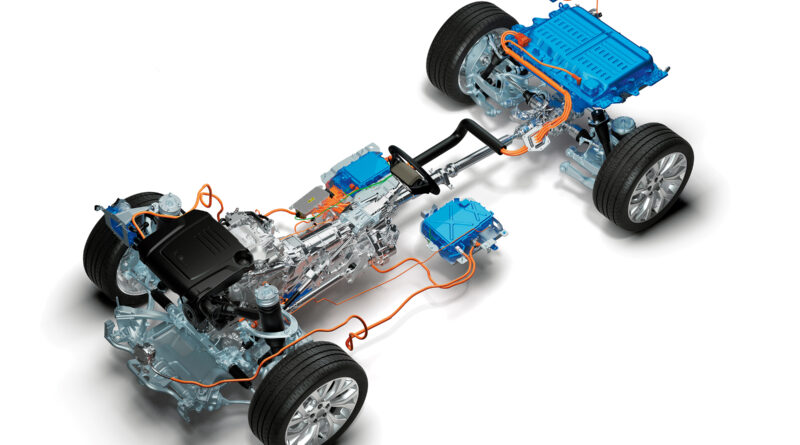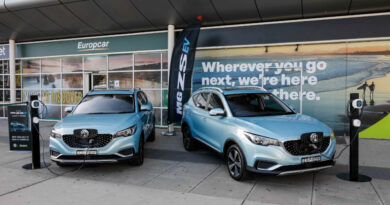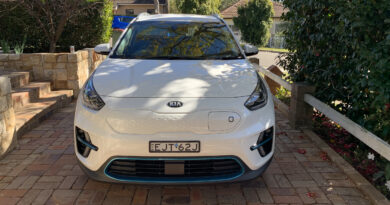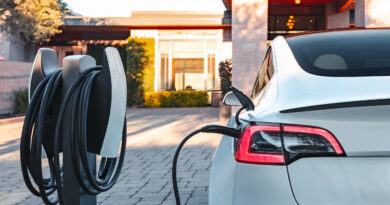PHEV phoolishness: Why plug-ins don’t make sense
Plug-in hybrids are not, in my opinion, a smart choice. That’s the polite version. What I really think could offend some readers.
Though PHEVs seem like a sensibly cautious step towards electromobility, in reality they’re compromised every which way you look at them. So let’s start with the big one…
It’s self-evident that PHEVs appeal to those who cannot bear to be weaned off the noxious products of the oil industry. Those who buy them are a bit like a five-year-old with a dummy in their mouth; determined to keep on sucking, no matter what the grown-ups say.
WHAT’S THE DIFFERENCE? Click to learn more about hybrid, PHEV or EV
Let’s agree that the objective of electrifying the car is to massively reduce the impact that simply getting around has on the climate of our planet. And let’s accept this needs to be done, and needs to be done quickly. Opting for a PHEV instead of an EV slows down this urgent project for years to come.
What you buy today will still be on the road more than a decade from now. According to the most recent Australian Bureau of Statistics data from 2020, the average age of the almost 20 million vehicles on our roads is 10.4 years.
READ MORE: PHEVs a “con” says pro-EV European campaign group
READ MORE: Top 10 selling plug-in hybrids (PHEVs) in Australia in 2020
Still, it’s fairly safe to assume buyers who choose a PHEV instead of something powered purely by an internal-combustion engine, or even a non-plug-in hybrid, are motivated by environmental concern. At least to some extent…
The only circumstance when a PHEV is doing something good for the planet is when it’s driving purely on electric power, and there a number of reasons why this isn’t as likely to happen as frequently as you might think.
PHEVs usually don’t have have a very long electric-only driving range. Their battery packs typically have a capacity that’s only around 10 to 20 percent that of an EV of similar size.
PHEVs require charging commitment
This means they require very frequent recharging to maximise the amount of driving they do in electric mode. Having to plug in every single day can become tiresome. I know this from experience with a variety of test cars. Any modern EV, with a real world range of say 300km, will need recharging only once or twice a week.
There’s a good chance that once the novelty of electric PHEV-ing has worn off, that the user will not recharge as often as they should.
This is especially the case with PHEVs bought as company vehicles. A fresh European study found that company-owned PHEVs in Germany, Belgium and the Netherlands were driven from 76 to 92 percent of their annual kilometres using their ICE. These are shocking statistics. While the numbers are better for privately owned PHEVs, they’re still not great.
But even the most diligent PHEV driver is likely to find it difficult to drive electrically as much as they’d like to. PHEVs usually have electric motors that are much less powerful than their ICEs. The Countryman PHEV is a good example. Its turbo 1.5-litre three-cylinder engine produces 100kW, its electric motor 65kW.

As in most other PHEVs, flooring the accelerator will cause the Mini’s engine to fire up, even if the driver has selected electric-only mode and there’s plenty of charge in the battery. Avoid flooring the accelerator and the Countryman PHEV will run on electricity until its battery is discharged, but performance is much reduced. Will all customers be prepared to live with this trade-off? Don’t think so…
PHEVs usually switch to hybrid operation when their battery is drained, blending engine and electric power as required and shutting down the ICE when possible. But in this operational mode PHEVs often aren’t as efficient as a normal hybrid.
A while back I spent a fortnight and almost 900km in a Mini Countryman PHEV, carefully logging kilometres and consumption. In hybrid mode the compact SUV used around 8.0L/100km, which is little, if any, improvement on a conventionally powered equivalent. Wait, it gets worse…
The actual electric driving range of the Countryman PHEV was only around 20 to 30km. Admittedly it was winter in the UK, and cold reduces the driving range of all kinds of EV. Despite being really diligent about recharging the Mini every night, I was only able to drive around 35 percent of my total kilometres using electric power.
This is bad enough, but then I divided the total distance I’d driven by the total fuel used. The result was 5.3L/100km. Now this is around what you’d expect to get from a normal hybrid of roughly similar size, a Toyota C-HR say. But in the Mini I was also paying for the estimated 90 to 100kWh of electricity it used.
At least part of the explanation for the Countryman PHEV’s poor efficiency is that it has to lug around that not-so-useful battery pack. With around 10 times the storage capacity of an ordinary hybrid, PHEV battery packs are much heavier and a lot larger.
Weight, there’s more
The extra bulk often reduces storage space in the PHEV version. Though it’s not my aim to pick on the Countryman PHEV in particular, the Mini again proves the point. Also, the extra weight of the PHEV battery pack does nothing for driving dynamics.
And let’s not forget that bigger battery pack makes PHEVs more costly than a normal hybrid.
So you’ve bought a PHEV and you’ve ended up with a really second-rate and kinda costly hybrid. But you’re also missing out on the benefits that come with making the switch to an EV.
Because their motors and transmissions are so simple, and because regenerative braking takes care of much of the stopping, EVs are inexpensive to maintain. They don’t need oil changes, or replacement air and oil filters, or new spark plugs, timing belts and all the rest at regular intervals, and their brake pads and discs seldom wear out. The same can’t be said for PHEVs. That’s one reason EVs are shaping up to be great used cars in years to come.
So, to summarise…
PHEVs are costly and compromised things that often fail to deliver much in the way of environmental benefit.
If you’re really not quite ready to leave the ICE-age behind, then by all means buy a hybrid. If you’re ready and able to go EV, please do. But PHEVs? Phorget ’em…





I beg to differ, not all PHEV are created equal.
Whilst the platform of the mini countryman is a quite good one and has features I would require, which many of the other PHEV that appeared on the market don’t have, it is still lacking the possibility of having a tow-bar fixed. Not necessarily for towing a caravan but mainly putting on a rack for bicycles or towing the 750kg folding trailer to the recycling center aka tip. At some stage in your life you just don’t want to lift 20kg bikes onto a roof rack anymore.
Who says the electric motors are less powerful than the ICE. My PHEV has a 87kW ICE and two 60kW electric motors.
And with all due respect, given Australia’s infrastructure and distances a BEV as the only car in the household is not really a good proposition. Going to Bendigo, Ballarat, Daylesford or Sorrento from where I live in Melbourne might be a bit of a challenge for the range of a BEV if you want to include the return-trip and may be include some a/c for heating or cooling. And I really do not want to stay somewhere or need to find a charging station in the middle of the night which then might not work because of lack of maintenance etc.
So in my opinion the PHEV is having the best of both worlds drive electric whilst you can i.e. all the local trips and use the ICE when you must i.e. when going cross country. The last holiday before COVID from Melbourne to Wagga Wagga, Bathurst, Blue Mountains Sydney, Canberra and back would have been an extensive planning exercise – more difficult than flight planning I might add – considering range, available locations reservers, charging times etc.etc. why would I want to spoil my holidays?
You are right, 35% of electric usage is what my 70 000km experience shows and this is also in line with international studies and findings which just has made me a Joe Average :-(. But some months we just have not seen a petrol station at all because there were no interstate or cross country trips and all was done electric.
One thing you get very quickly used to though, is entering and exiting the garage without any exhaust fumes that also enter the house. And that requires control over the state of charge of the battery. Something the countryman has but many others don’t have.
Thank you John. I have always thought that plug ins’ seemed to be a half baked way to achieve efficiency.
My thinking is to dive in and go full electric or nothing. As a retired person living in Orange NSW a small EV would be ideal for the usual shopping and general running around.
I have just discovered this site and am amazed and depressed at range of opinion and lack of outward looking governments state and federal.
I live in Sydney and have been driving my Volvo XC40 Recharge PHEV for several months. The EV range is about 35km which means nearly all my urban trips are pure electric. I usually plug it in the evening and charge it during off-peak hours.
In April we did a 3500km trip to Carnavon Gorge in Queensland. That trip would have been near-impossible with a BEV. I managed to find a charging station at the council car park in Warwick and topped up the battery while we had a break but most of the trip was using the ICE in hybrid mode. Only one place we stayed at had a 240V outlet within reach of my extension cord.
There is plenty of power when running either pure electric or ICE – this was with a luggage pod on the roof and towing a small trailer.
I did find the battery hold function useful to save the battery charge until we reached a town. I even used the battery charging mode for the last 200km before reaching an unpowered camping site so that the car had plenty of charge for backup campsite power.
So… BEV, PHEV or traditional hybrid really depends on your travel needs. I certainly don’t regard my PHEV as a poor compromise.